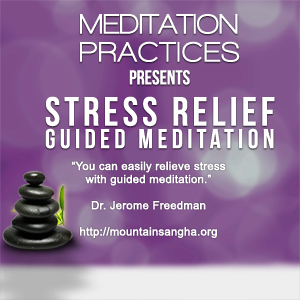In the book, Seven Secrets to Stop Interruptions in Meditation: How to Concentrate, Focus on Your Meditation and Deal with Distractions, you will learn a simple and easy way to have a daily meditation practice and not be bothered by the top 10 obstacles in meditation. The method has even been taught to children as young as four years old.
Compare this with to the 10 obstacles in meditation presented by Ashley Turner and en*theos on a 60 minute Livestream class on Thursday, February 20 at noon Pacific time. Click here for more information.
I agree that in a beginning meditation practice, there are almost universal challenges that arise, most of them based on wrong perceptions. Let us examine these 10 obstacles in meditation one at a time and reveal the underlying myths involved.
- “In Meditation, My Mind Should Be Calm and Quiet”
This myth is what may be the most significant obstacle of all. I have heard the likes of Pema Chodron, a beloved teacher in the Shambhala tradition of Chogyam Trungpa Rimpoche, say that this was so. After so many years of practice, she still acknowledges that her mind is not always calm and quiet.
Vishen Lakhiani, the article titled Envisioning Method Of Daily Meditation Practice also explains this phenomena, and I find it to be true as well. - “I Don’t Have Enough Time to Meditate”
This one is purely and simply an excuse. Mindfulness can be brought to many activities in life such as doing the dishes, walking the dog, putting the kids to bed, and being present for our loved ones. Of course, it is most effective if we have a morning meditation practice of 9 minutes each day. - “It Feels Like My Mind is More ‘Crazy’ During Meditation”
This is just our mind nattering about how difficult it is to practice. Just acknowledge this one and return to your object of meditation. All we have to do is continue to pay attention to what is going on in our minds. - “Meditation Should Be Blissful, But If Feels Like Such Hard Work”
Meditation is not always blissful and it is not always hard work. Some where in the middle we can learn to cope with our thoughts and control our monkey mind. - “I Don’t Think Meditation is Working For Me….I’m Not Seeing Any Results Yet”
If this is your complaint, why not ask yourself, “If I started a new exercise program at the gym, would I see results in one day? How about one week? A month?” You get the idea – meditation, like the mental exercise it is takes time to root in our consciousness. - Negative Self Talk (“Self–Beat”)
When thoughts like these arise, ask yourself, “Is this true? Do I really believe these negative thoughts?”
Then try flipping them into their positive aspect and return to the object of your meditation. - Exaggerating the Negative + Discounting the Positive
Let go of these mind traps that feed insecurity, anxiety, and depression and replace them with positive thoughts of security, calmness, and happiness. - Blaming
There is no one to blame for the state of mind you find yourself in. Learn to harness the powers of forgiveness and gratitude to dispel blaming thoughts. - Catastrophizing
When you assume the worst possible outcomes, you are bound to negative thoughts like fear, anxiety, and panic. The best solution is to notice when you are catastrophizing and become content with your present situation. - The “Should’s”
“Should’s” are left over garbage in our minds from our upbringing. The more we practice meditation, the less of a grasp they will have on our meditation.
Please don’t get caught up in the new “should:” “I should be meditating!” [Read More…]
Now that we have reviewed the top 10 obstacles to meditation, why not try sitting silently for 1 minute. Set a timer and just watch your mind. Which obstacle came first? Actually, did you try?














You must be logged in to post a comment.